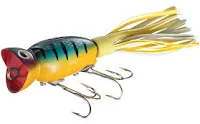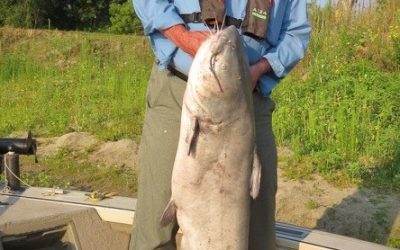Reprinted from the Sioux City Journal
Successful ice fishing, I have long maintained, is simply a whole lot of little things put together that result in catching fish. How often have you been fishing with someone and they catch a lot more fish than you do for no apparent reason. Or, perhaps, you are the one catching most of the fish.
If you begin to investigate every little detail you may find what the difference is.
FISHING LINE
Ranking right at the top of all these little details is your fishing line. Generally speaking you should use 4-pound-test line for panfishing, 6-pound-test line for walleye fishing and 10-pound-test for northerns or lake trout.
However, sometimes these recommendations do not fit the circumstances. I always carry a rod spooled with 2-pound-test line for panfish. Some anglers even go lower. Sometimes, in ultra clear water you should drop to 4 for walleyes and 8 for northerns or lake trout.
It’s also best to use line designed specifically for ice fishing. You want a line which is soft, has low memory and doesn’t stretch much. Lines with low stretch enable you to stay in better contact with your lure and detect bites better. The line I use is Berkley’s Trilene Micro Ice. The last couple of years I have also experimented with super lines. They have literally no stretch and are finer diameter than monofilament. Some of my rods are spooled with Fireline Crystal Micro Ice.
BITE INDICATORS
If you are not using bite indicators you simply are not catching as many fish as you should. Bite indicators, sometimes called spring bobbers, attach to the end of your rod and the line goes through them. When a fish mouths your bait, the bobber dips down and that tells you to set the hook.
There are a wide variety of spring bobbers on the market and they all work well. Experiment with several different kinds and you will soon find a version that best fits your fishing style.
One thing to keep in mind is the size of the eye on the bobber. The larger the eye, the less problem you will have with ice forming in it. There are a variety of ways of attaching spring bobbers to your rod, but if you want it to be permanent attach it with 5-minute epoxy.
Bite indicators are not used, of course, with heavy spoons or jigging lures. Spring bobbers are most effective for panfish, especially bluegills.
PLASTICS
The past couple of years have witnessed a huge growth in small, soft plastic tails made to attach to your tiny jig, tear drop or other panfish lure. These tails are so effective that when the bite is on you don’t even need to have live bait.
I might be wrong, but I think the tiny tail bait evolved from an ice fishing jig called the Ratso. It is simply a tiny jig head with a tapered plastic body with a thin tail extending behind the hook.
I like them on tear drop spoons. This is a lure that hangs vertically in the water. Attach your plastic tail so that it is positioned horizontally when in the water. You will get the best action simply by jiggling the lure.
As far as bait is concerned, a waxie would be too large and ruin the effect of the tail. You could attach one maggot on the hook point if you desired. If you simply have to use live baits, try a goldenrod grub. You have to harvest these yourself, but it is a tiny, round grub with a lot of fish appeal and small enough that it wouldn’t ruin the action of the tail.
But, be sure to try them without bait. You will be surprised.
DECOYS
Fish are very curious individuals. If something strange happens in their environment, they will often swim over to investigate.
One of the best anglers I ever shared a boat with was the late Jim McDonnell, Royal, Iowa. He guided both open water and ice on the Okobojis. When ice fishing, he always brought along a rod rigged with a fishing decoy made to attract northerns for fish spearing. When things slowed, he’d drop down the decoy and pump it up and down for awhile, then retrieve it and send down his panfish rod. More often than not, he’d nail a perch or bluegill right away.
You can do the same thing with a jigging lure such as the Salmo Chubby Darter, Lindy’s Darter or similar lures. Send it down, jig it for awhile, pull it up and drop down your panfish rig. It works often enough to keep in your bag of tricks.
FLASHING
I learned this long ago while fishing West Okoboji for perch. In those days we used Swedish Pimples and Kastmaster jigging lures.
If the bite slowed, we’d stand up and sweep our rod above our heads and jiggle it awhile and then let it fall to the bottom. We might do that three or four times and then resume fishing. Those rising and falling baits often attracted fish.
So too, does the little puffs of silt your lures create when they fall to the bottom.
There is no single secret to successful fishing,whether through the ice or open water. However, if you pay attention to details and have a few tricks up your sleeve you should catch your share of fish.
More outdoors information is found at http://siouxcityjournal.com/sports/recreation/outdoors/





0 Comments